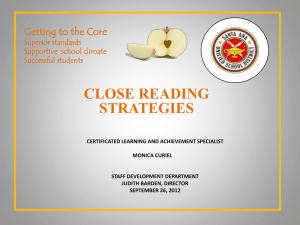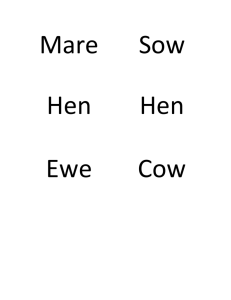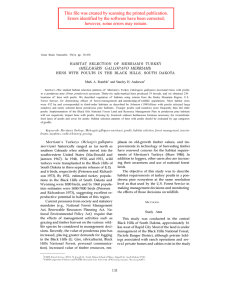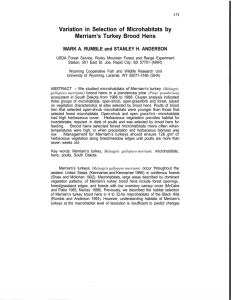SHORT COMMUNICATIONS 137 Poult adoption in Merriam’s Wild Turkeys.- Wilson Bull. (Lagopus lagopus)
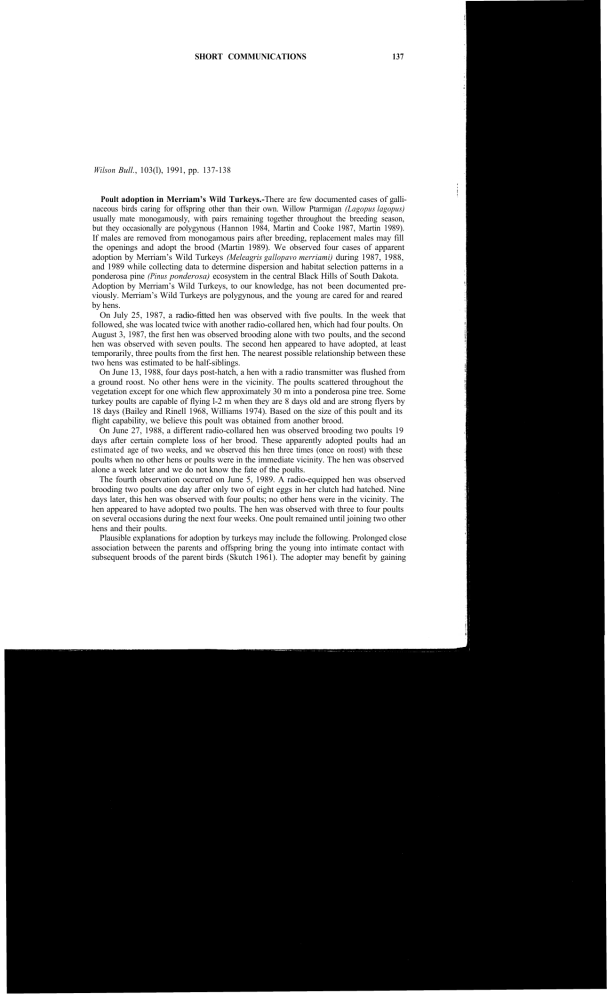
SHORT COMMUNICATIONS 137
Wilson Bull.
, 103(l), 1991, pp. 137-138
Poult adoption in Merriam’s Wild Turkeys.There are few documented cases of gallinaceous birds caring for offspring other than their own. Willow Ptarmigan (Lagopus lagopus) usually mate monogamously, with pairs remaining together throughout the breeding season, but they occasionally are polygynous (Hannon 1984, Martin and Cooke 1987, Martin 1989).
If males are removed from monogamous pairs after breeding, replacement males may fill the openings and adopt the brood (Martin 1989). We observed four cases of apparent adoption by Merriam’s Wild Turkeys (Meleagris gallopavo merriami) during 1987, 1988, and 1989 while collecting data to determine dispersion and habitat selection patterns in a ponderosa pine (Pinus ponderosa) ecosystem in the central Black Hills of South Dakota.
Adoption by Merriam’s Wild Turkeys, to our knowledge, has not been documented previously. Merriam’s Wild Turkeys are polygynous, and the young are cared for and reared by hens.
On July 25, 1987, a radio-fitted hen was observed with five poults. In the week that followed, she was located twice with another radio-collared hen, which had four poults. On
August 3, 1987, the first hen was observed brooding alone with two poults, and the second hen was observed with seven poults. The second hen appeared to have adopted, at least temporarily, three poults from the first hen. The nearest possible relationship between these two hens was estimated to be half-siblings.
On June 13, 1988, four days post-hatch, a hen with a radio transmitter was flushed from a ground roost. No other hens were in the vicinity. The poults scattered throughout the vegetation except for one which flew approximately 30 m into a ponderosa pine tree. Some turkey poults are capable of flying l-2 m when they are 8 days old and are strong flyers by
18 days (Bailey and Rinell 1968, Williams 1974). Based on the size of this poult and its flight capability, we believe this poult was obtained from another brood.
On June 27, 1988, a different radio-collared hen was observed brooding two poults 19 days after certain complete loss of her brood. These apparently adopted poults had an estimated age of two weeks, and we observed this hen three times (once on roost) with these poults when no other hens or poults were in the immediate vicinity. The hen was observed alone a week later and we do not know the fate of the poults.
The fourth observation occurred on June 5, 1989. A radio-equipped hen was observed brooding two poults one day after only two of eight eggs in her clutch had hatched. Nine days later, this hen was observed with four poults; no other hens were in the vicinity. The hen appeared to have adopted two poults. The hen was observed with three to four poults on several occasions during the next four weeks. One poult remained until joining two other hens and their poults.
Plausible explanations for adoption by turkeys may include the following. Prolonged close association between the parents and offspring bring the young into intimate contact with subsequent broods of the parent birds (Skutch 1961). The adopter may benefit by gaining
138
THE WILSON BULLETIN
l
Vol. 103, No. 1, March 1991 experience in parenting activities which could enhance reproductive success later in life, but the costs would be lost initial reproductive success (Selander 1964, Brown 1978). When helpers are related and when the benefit/cost ratio is large, we might expect selection to lead to greater social specialization (Brown 1978) such as adoption. However, in our observations, the adopters were mature hens; thus, there would be little reproductive experience gained since two of the four hens were successful in previous ye&, and three had existing broods.
In contrast to the other situations, costs to the hen on the June 27, 1988 observation were low. This hen had lost here complete brood, and we had not observed renesting following hatching of a brood. The benefit/cost ratio in this situation would have been larger. Since in the Black Hills the risks of dispersing from the family units are minimal, mates and territories are plentiful, and initial breeding success is high, the establishment of family social units and adoption should be rare (Emlen 1982) .
Acknowledgments. The authors thank R. Hodorff for three years of help with field work.
Thanks to J. Rotenberry D. Paul, and D. Finch for providing helpful suggestions in revising earlier drafts of this note.
B
AILEY
R. W.
AND
K. T. R
INELL
. 1968. History and management of the wild turkey in
West Virginia. West Virginia Department of Natural Resources Division of Game and
Fish. Bull. 6.
B ROWN , J. L. 1978. Avian communal breeding systems. Ann. Rev. Ecol. Syst. 9: 123-l 55.
E
MLEN
, S. T. 1982. The evolution of helping. 1. An ecological constraints model. Div.
Biol. Sci. 119:29-39.
H ANNON , S. J . 1984. Factors limiting polygyny in the willow ptarmigan. Anim. Behav.
32:153-161.
M
ARTIN
, K. M.
1989. Pairing and adoption of offspring by replacement male willow ptarmigan: behavior, costs, and consequences. Anim. Behav. 37:569-578.
-, AND F. C OOKE . 1987. Bi-parental care in willow ptarmigan: a luxury? Anim. Behav.
35:369-379.
S ELANDER , R. K.. 1964. Speciation in wrens of the genus Campylorhynchus. Univ. Calif.
Publ. Zool. 74: i-305.
S KUTCH , A. F. 1961. Helpers among birds. Condor 63: 198-226.
W ILLIAMS , L. E. 1974. Flight attainment in wild turkeys. J. Wildl. Manage. 38:151-152.
T
ODD
R. M
ILLS AND
M
ARK
A. R
UMBLE
, U.S.D.A., Forest Service, Rocky Mountain Forest and Range Experiment Station, 501 E. St. Joseph St., Rapid City, South Dakota 57701.
Received 9 Feb. 1990, accepted 26 Aug. 1990.


